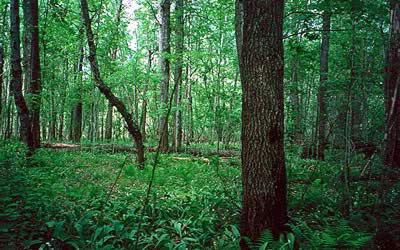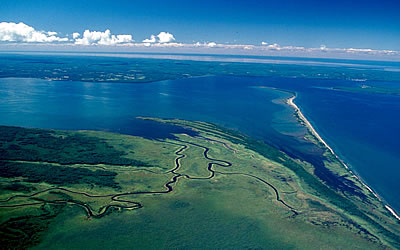Site Description
This site encompasses the wetland complex of the lower Bad and Kakagon rivers in northern Ashland County, including Long Island, and the forest corridors of the Bad, White, Potato and Marengo Rivers. Most of this IBA falls within the Bad River Indian Reservation; Long Island is part of the Apostle Islands National Lakeshore. The wetland complex is one of the most extensive and least disturbed coastal wetland communities in the Great Lakes region (the largest on Lake Superior), and includes extensive wild rice beds, sedge meadow, emergent marsh, coastal fen, tamarack swamp, and shrub swamp. Long Island contains extensive beach and dune communities as well as areas of dry pine/oak forest. The forested river corridors are composed of aspen, red maple, mixed boreal hardwoods and conifers, bottomland hardwoods, and black ash.

Kakagon-Bad River Complex, photo by Eric Epstein

Kakagon-Bad River Complex, photo by Ted Cline & James Meeker
Ornithological Importance
The marshes, conifer swamps and shrub wetlands of the wetland complex support such diverse breeding species as yellow rail, Virginia rail, northern harrier, sedge wren, Le Conte’s sparrow, northern waterthrush, Blackburnian warbler, and golden-winged warbler. The forested river corridors are particularly important for breeding neotropical migrants such as ovenbird, Canada warbler, Nashville warbler, black-throated green warbler, and mourning warbler. The area is an outstanding migratory concentration area in both fall and spring, hosting tens of thousands of passerines, raptors, shorebirds, and waterbirds.